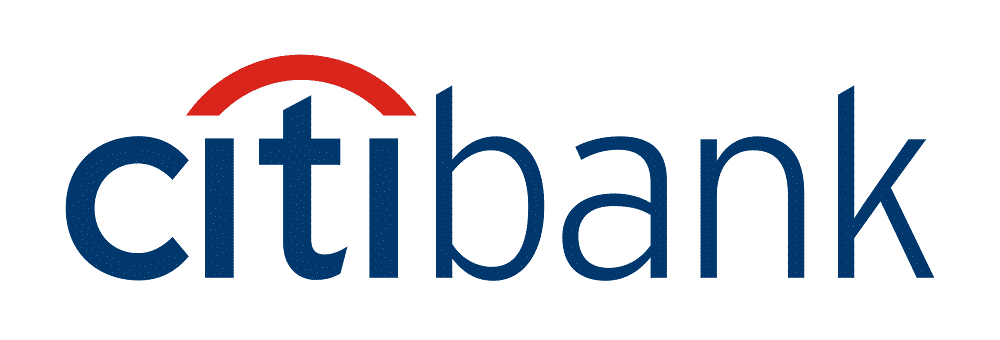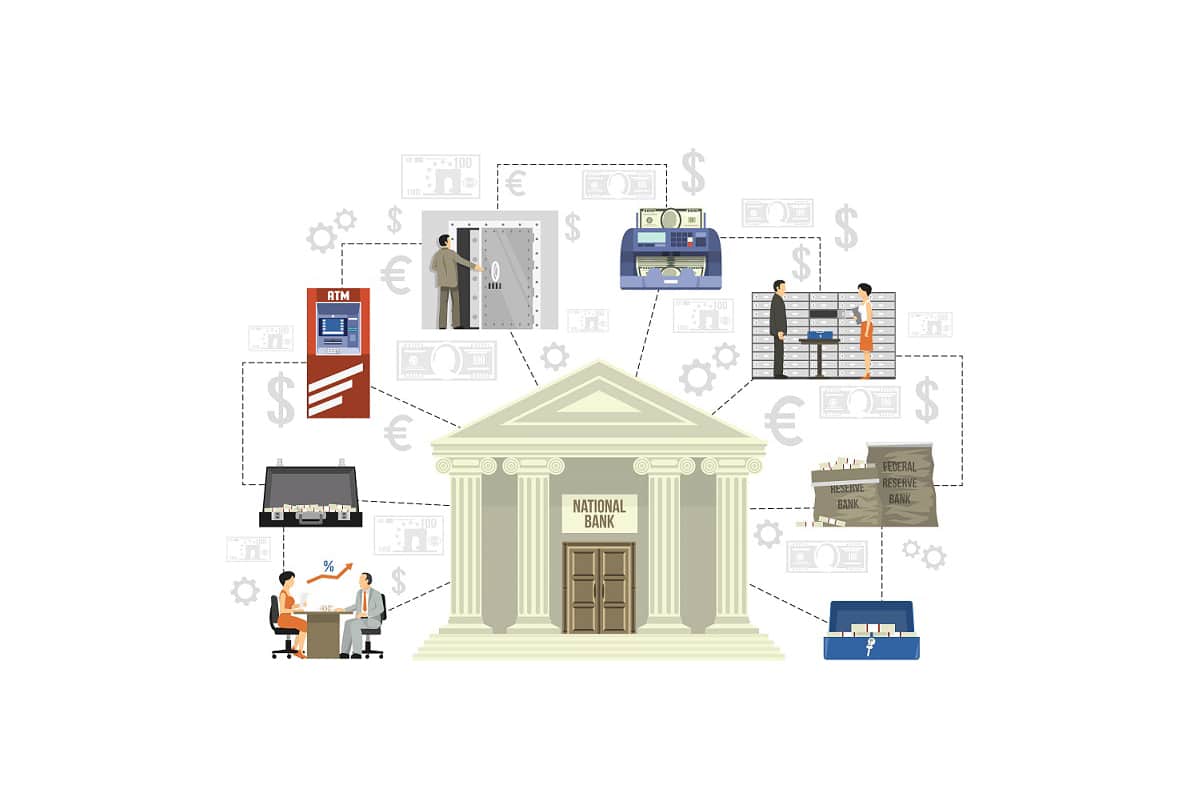Banking has become an essential and inevitable part of everyone’s life today. The banking industry takes care of the finances of the country that includes both cash and credit. Modern banking started back in the 18th century when the first bank was opened, Bank of Calcutta in 1806 that is now named State Bank of India.
As of now, there are 12 public sector banks and 21 private sector banks in India. A good banking system helps the country in increasing economic development and has also inculcated the trend of saving amongst people. There are various types of banks in India, and all of them are reliable and safe as they are approved by the apex bank of the country, which is the Reserve Bank of India (RBI).
Type of Banks: Different Types of Banks in India
Structure of Banks in India
Banks are divided into four categories:
1. Commercial Banks
- Public Sector
- Private Sector
- Foreign Banks
- Regional Rural Banks
2. Cooperative Banks
- Urban cooperative
- State cooperative
3. Small Finance Banks
4. Payments Banks
These were the major bank types, but before we know more about the different types of banks in India, first let us know about the Central bank.
Central Bank of India
Every country has one central bank that regulates and controls the other banks of the country. They are also called the banker’s bank or government’s bank, and all the central banks trace their history from the Bank of England. They are called central banks because they are the highest financial authority, and they occupy the central position of the banking system.
Reserve Bank of India is the apex bank of India; it keeps a close analysis and synchronizes with all the other banks in the country. It is solely responsible for monitoring and guiding other banks nationwide. They issue the country’s currency that is Indian Rupee.
Other major functions of RBI are:
- They assure financial security and pecuniary management from country to country and play a vital role in the country’s economy.
- They execute and guide financial and monetary strategies, approaches and making policies, managing foreign exchange & gold reserves, supervising the banking industry, etc.
- They also keep a check on the monetary system of India by handling the finances.
- RBI also purchases government debt, is a lender to commercial banks, and have a monopoly in issuing paper money
- All the functions they do are done under the supervision of the Indian government.
Scheduled Banks
These are the banks that were included in the Second Schedule of the RBI Act in 1934. For qualifying to become a scheduled bank, it was mandatory to have a paid capital of at least 5 lakh rupees. RBI gives loans to scheduled banks as and when required.
1. Commercial Banks
Banking primarily means accepting deposits in terms of money from the people for lending or investment. They are called financial intermediaries as they take funds from the depositors and provide them to borrowers. They are the oldest institutions in banking history and have a huge network of branches spread all over the country.
These banks and regulated and maintained under the Banking regulations Act, 1949. They are usually profit-making banks that completely depend on their business model. Their major functions are giving loans to the government, general public, corporate, debit & credit cards, bank accounts, and accepting deposits.
Commercial banks run in both government and private sectors.
Types of Commercial Banks:
- Public Sector
- Private Sector
- Foreign Banks
- Regional Rural Banks
Let us know about these banks in detail:
a. Public Sector Banks

They are also called the nationalized banks. In public sector banks, the major stake is of government, and they mostly give more emphasis to social objectives rather than profits. These banks have around 75% of the total banking business nationwide.
They ensure that there is no monopoly in the market and dominance of financial and banking services by a few banks. They also ensure that all the banks comply with the policies and regulations.
Also, they should keep a check that all banks:
- Assist the necessities of the deprived and weaker sections of the community
- Provision to the wants of agriculture and other priority sectors
- Restrict the consolidation of wealth and economic power
- Public sector banks give preference in constituting agriculture, small scale industries, and small businesses
As of now, there are 12 public sector banks in India.
List of Public Sector Banks:
| List of PSU Banks | Number of Branches | Number of ATMs | Headquarter |
| State Bank of India (SBI) | 24000 | 58559 | Mumbai |
| Punjab National Bank (With Merger of Oriental Bank of Commerce and United Bank of India) | 11437 | 8985 | New Delhi |
| Bank of Baroda (With Merger of Dena Bank & Vijaya Bank) | 8581 | 10318 | Vadodara |
| Canara Bank (With Merger of Syndicate Bank) | 10391 | 12829 | Bengaluru |
| Union Bank of India (With Merger of Andhra Bank and Corporation Bank) | 9500 | 13300 | Mumbai |
| Bank of India | 5825 | 5000 | Mumbai |
| Indian Bank (With Merger of Allahabad Bank) | 6000+ | 6104 | Chennai |
| Central Bank of India | 2876 | 4666 | Mumbai |
| Indian Overseas Bank | 2995 | 3400 | Chennai |
| UCO Bank | 2377 | 4000 | Kolkata |
| Bank of Maharashtra | 1860 | 1897 | Pune |
| Punjab & Sindh Bank | 1045 | 1554 | New Delhi |
Under the public sector bank comes Nationalized banks; let’s understand the difference between the public sector and nationalized banks.
Also Read: Merchant Banking in India
b. Nationalized Banks

After liberation, there were a few banks that were held privately. During that time, majorly private banks provided financial services. It was in the 60s that the Indian economy became an important factor in increasing the economy of the country.
It was in 1969 that the government nationalized 14 banks. Because of the nationalization of banks, the majority of the banking control came into the hands of the government.
List of the Nationalized Banks are:
- Allahabad Bank
- Andhra Bank
- Dena Bank
- Oriental Bank Of Commerce
- Syndicate Bank
- United Bank Of India
- Vijaya Bank
- IDBI Bank
In these banks, the maximum ownership is with private shareholders instead of the government. They are managed, owned, and held by private promoters, and private banks are free to operate as per market forces, but all the rules and regulations are laid by RBI only.
c. Private Sector Banks

The reason why RBI regulates these banks is to make sure safety and seamless functioning of these banks plus, it also eliminates the risk of monopoly in the financial sector. There are two types of private sector banks in India-
- Old Private Sector Banks: These are the banks that emerged before 1969
- New Private Sector Banks: These banks emerged after 1969 as not all the banks were nationalized in 1969. These banks entered the industry after the nationalization period. It was in 1993 that the RBI permitted the private sector to enter the banking system.
By 2009, in total, there were 7 private sector banks and 15 old private sector banks.
List of Private Sector Banks:
| Sr. No | Name of the Bank | Branches | Establishment | Headquarter |
| 1 | Axis Bank | 4528 | 1993 | Mumbai, Maharashtra |
| 2 | Bandhan Bank | 670+ | 2015 | Kolkata, West Bengal |
| 3 | CSB Bank | 417 | 1920 | Thrissur, Kerala |
| 4 | City Union Bank | 700+ | 1904 | Kumbakonam, Tamil Nadu |
| 5 | DCB Bank | 334 | 1930 | Mumbai, Maharashtra |
| 6 | Dhanlaxmi Bank | 270+ | 1927 | Thrissur city, Kerala |
| 7 | Federal Bank | 1284 | 1931 | Aluva, Kochi |
| 8 | HDFC Bank | 5430 | 1994 | Mumbai, Maharashtra |
| 9 | ICICI Bank | 5288 | 1994 | Mumbai, Maharashtra |
| 10 | IDBI Bank | 1892 | 1964 | Mumbai, Maharashtra |
| 11 | IDFC FIRST Bank | 260 | 2015 | Mumbai, Maharashtra |
| 12 | IndusInd Bank | 2000 | 1994 | Pune, Maharashtra |
| 13 | J&K Bank | 1038 | 1938 | Srinagar, Jammu, and Kashmir |
| 14 | Karnataka Bank | 857 | 1924 | Mangaluru, Karnataka |
| 15 | Karur Vysya Bank | 779 | 1916 | Karur, Tamil Nadu |
| 16 | Kotak Mahindra Bank | 1500+ | 2003 | Mumbai, Maharashtra |
| 17 | Nainital Bank | 150 | 1922 | Nainital, Uttarakhand |
| 18 | RBL Bank | 398 | 1943 | Mumbai, Maharashtra |
| 19 | South Indian Bank | 876 | 1929 | Thrissur, Kerala |
| 20 | Tamilnad Mercantile Bank | 509 | 1921 | Tuticorin, Tamilnadu |
| 21 | YES Bank | 1000+ | 2004 | Mumbai, Maharashtra |
These were the type of banks in India that are privately owned. These are all the private banks that are currently operating in India.
Also Read: List of Private Banks in India
d. Foreign Banks

These are the banks with bank branches in India but have head offices in a foreign country. RBI permits these banks to run either through branches or by wholly-owned subsidiaries. The major use of foreign banks is in the corporate sector.
But, many big foreign banks have made financing a major segment of their portfolio. Some of the significant services that these banks offer are credit cards, home loans, automobile finance, and much more.
It is a mandate for foreign banks to imply with all the banking regulations by RBI. The extended presence of foreign banks has raised the race in the banking industry.
List of Foreign Banks:
There are 45 International banks in India with over 300 branches in the major cities. Here is the list for you:
| Si.No | Foreign Sector Bank | Bank Website |
| 1 | AB Bank Limited | abbl.com |
| 2 | Abu Dhabi Commercial Bank Ltd. | adcbindia.com |
| 3 | American Express Banking Corp. (AEBC) | americanexpress.com/india/homepage.shtml |
| 4 | ANZ Banking Group Ltd. | anz.com |
| 5 | Bank of America NA. | bankofamerica.com |
| 6 | Bank of Bahrain & Kuwait BSC | bbkonline.com |
| 7 | Barclays Bank Plc | barcap.com |
| 8 | BNP PARIBAS | bnpparibas.com |
| 9 | Citibank NA. | Citibank.co.in |
| 10 | Cooperatieve Rabobank U.A | rabobank.com/india |
| 11 | Credit Agricole Corporate And Investment Bank | ca-cib.com |
| 12 | Credit Suisse AG | credit-sussie.com/in /on/investment-banking |
| 13 | CTBC Bank Co Ltd | NA |
| 14 | DBS Bank India Ltd | dbs.com |
| 15 | Deutsche Bank AG | db.com |
| 16 | Doha Bank | Doha bank.co.in |
| 17 | Emirates NBD Bank (PJSC) | emiratesnbd.co.in |
| 18 | First Abu Dhabi Bank PJSC | bankfab.com/en-in |
| 19 | FirstRand Bank Ltd | firstrand.co.za |
| 20 | Industrial and Commercial Bank of China Ltd. (ICBC) | icbcindia.com |
| 21 | Industrial Bank Of Korea | NA |
| 22 | J P Morgan Chase Bank, NA. | jpmorgan.com |
| 23 | JSC VTB Bank | vtb.com |
| 24 | KEB Hana Bank | NA |
| 25 | Kookmin Bank | kbstar.com |
| 26 | Krung Thai Bank Public Company LTD | ktb.co.th/th/content/others/foreign-location-detail |
| 27 | Mashreqbank psc | mashreqbank.com |
| 28 | Mizuho Bank Ltd. | mizuhocbk.co.jp/english |
| 29 | MUFG Bank Ltd | mufg.jp/english |
| 30 | National Australia Bank (NAB) | nationalaustraliabank.com
nabindia/en/home |
| 31 | PT Bank Maybank Indonesia TbK | NA |
| 32 | Qatar National Bank Q P S C. | qnb.com |
| 33 | Sberbank | NA |
| 34 | SBM Bank (India) Ltd. | subgroup.mu |
| 35 | Shinhan Bank | shbiz8008@shinhan.com |
| 36 | Societe Generale | societegenerale.in |
| 37 | Sonali Bank Ltd. | sbl.in |
| 38 | Standard Chartered Bank | standardchartered.com |
| 39 | Sumitomo Mitsui Banking Corporation | NA |
| 40 | The Bank of Nova Scotia | scotiabank.com |
| 41 | The Hongkong & Shanghai Banking Corporation Ltd. | HSBC.co.in |
| 42 | The Royal Bank of Scotland N V | rbs.in |
| 43 | United Overseas Bank Limited | uobgroup.com |
| 44 | Westpac Banking Corporation | NA |
| 45 | Woori Bank | wooribank.com |
e. Regional Rural Banks

These banks were set up by the government of India on October 2, 1975. These banks are operating in the various states of the country. The primary reason for creating them was to serve rural areas with all their banking and financial requirements. Their major customers are-
- agricultural laborers
- small and marginal farmers
- artisans
- small entrepreneurs
RRB’s are backed by scheduled banks and principally by a nationalized commercial bank. All RRB’s are controlled both by the State and Central government and a sponsoring public sector commercial bank. But, there are a lot of urban areas as well where the branches of RBB are set up.
The good part is that the government has taken several steps to increase the profitability and viability of RBIs. One of the major steps is uniting them with the same sponsored bank within a state.
There are 43 RBIs in the country; let us see the list of the banks along with their sponsored banks.
List of Regional Rural Banks:
| Sr. No. | Name of Regional Rural Bank | Sponsor Bank | State |
| 1 | Andhra Pradesh Grameena Vikas Bank | State Bank of India | Telangana |
| 2 | Andhra Pragathi Grameena Bank | Syndicate Bank | Andhra Pradesh |
| 3 | Arunachal Pradesh Rural Bank | State Bank of India | Arunachal Pradesh |
| 4 | Aryavart Bank | Bank of India | Uttar Pradesh |
| 5 | Assam Gramin Vikash Bank | United Bank of India | Assam |
| 6 | Bangiya Gramin Vikash Bank | United Bank of India | West Bengal |
| 7 | Baroda Gujarat Gramin Bank | Bank of Baroda | Gujarat |
| 8 | Baroda Rajasthan Kshetriya Gramin Bank | Bank of Baroda | Rajasthan |
| 9 | Baroda UP Bank | Bank of Baroda | Uttar Pradesh |
| 10 | Chaitanya Godavari Grameena Bank | Andhra Bank | Andhra Pradesh |
| 11 | Chhattisgarh Rajya Gramin Bank | State Bank of India | Chhattisgarh |
| 12 | Dakshin Bihar Gramin Bank | Punjab National Bank | Bihar |
| 13 | Ellaquai Dehati Bank | State Bank of India | Jammu & Kashmir |
| 14 | Himachal Pradesh Gramin Bank | Punjab National Bank | Himachal Pradesh |
| 15 | J&K Grameen Bank | J&K Bank Ltd. | Jammu & Kashmir |
| 16 | Jharkhand Rajya Gramin Bank | State Bank of India | Jharkhand |
| 17 | Karnataka Gramin Bank | Canara Bank | Karnataka |
| 18 | Karnataka Vikas Grameena Bank | Syndicate Bank | Karnataka |
| 19 | Kerala Gramin Bank | Canara Bank | Kerala |
| 20 | Madhya Pradesh Gramin Bank | Bank of India | Madhya Pradesh |
| 21 | Madhyanchal Gramin Bank | State Bank of India | Madhya Pradesh |
| 22 | Maharashtra Gramin Bank | Bank of Maharashtra | Maharashtra |
| 23 | Manipur Rural Bank | United Bank of India | Manipur |
| 24 | Meghalaya Rural Bank | State Bank of India | Meghalaya |
| 25 | Mizoram Rural Bank | State Bank of India | Mizoram |
| 26 | Nagaland Rural Bank | State Bank of India | Nagaland |
| 27 | Odisha Gramya Bank | Indian Overseas Bank | Odisha |
| 28 | Paschim Banga Gramin Bank | UCO Bank | West Bengal |
| 29 | Prathama UP Gramin Bank | Punjab National Bank | Uttar Pradesh |
| 30 | Puduvai Bharthiar Grama Bank | Indian Bank | Puducherry |
| 31 | Punjab Gramin Bank | Punjab National Bank | Punjab |
| 32 | Rajasthan Marudhara Gramin Bank | State Bank of India | Rajasthan |
| 33 | Saptagiri Grameena Bank | Indian Bank | Andhra Pradesh |
| 34 | Sarva Haryana Gramin Bank | Punjab National Bank | Haryana |
| 35 | Saurashtra Gramin Bank | State Bank of India | Gujarat |
| 36 | Tamil Nadu Grama Bank | Indian Bank | Tamil Nadu |
| 37 | Telangana Grameena Bank | State Bank of India | Telangana |
| 38 | Tripura Gramin Bank | United Bank of India | Tripura |
| 39 | Utkal Grameen Bank | State Bank of India | Odisha |
| 40 | Uttar Banga Kshetriya Gramin Bank | Central Bank of India | West Bengal |
| 41 | Uttar Bihar Gramin Bank | Central Bank of India | Bihar |
| 42 | Uttarakhand Gramin Bank | State Bank of India | Uttarakhand |
| 43 | Vidharbha Konkan Gramin Bank | Bank of India | Maharashtra |
Also Read: 10 Best Savings Bank Accounts For Children In India
2. Co-operative Banks

These banks come under the scheduled banks. Cooperative banks are organized under the state government’s act. Their primary role is to offer short-term loans to the agriculture sector in India. They are also called the mutual savings bank that is created to offer credit to its members at lower prices.
They are operated by the elected members of the managing committee and registered under the Cooperative Societies Act, 1912. Cooperative banks ensure the social well-being of the public, and they have a 3-level format-
a. State Co-operative Banks
At this level comes the state-level cooperative banks that comprise of NABARD finance government and the RBI. In these banks, public distribution of the money is done.
The ownership of these banks belongs to the government, and there are a few members who select the major management. SLR charges and concessional CRR also apply to these banks.
List of State Co-operative banks
- Kerala State Co-operative Bank Limited
- The Maharashtra State Co-operative Bank Limited
- Mizoram Co-operative Apex Bank
- Tamil Nadu State Apex Co-operative Bank
- West Bengal State Co-operative Bank
- The Delhi State Co-operative Bank Ltd
- Manipur State Co-operative Bank Ltd
- The Gujarat State Co-operative Bank Ltd
- Rajasthan State Co-operative Bank Ltd
These are the district-level cooperative banks, and they are set up for the development of the agricultural sector in rural areas. There also run non-agricultural cooperatives with other unions. There is a district-level bank in each district in the country.
b. Central Co-operative Banks
A State Apex Central Co-operative bank represents every district-level bank. These banks are given loans at a very concessional interest rate which would always be 1%-2% less than the standard bank rate.
c. Primary Agricultural Credit Societies

They are the rural or village level cooperative banks. Their primary motto is to help and assist the agriculture sector financially. For keeping track and check on these banks government has given the responsibility to NABARD.
List of Urban Co-operative banks
- Abhyudaya Co-operative Bank Ltd
- Ahmedabad Mercantile Co-Op Bank Limited
- Amanath Co-operative Bank Limited
- Andhra Pradesh Mahesh Co-Op Urban Bank Limited
- Apna Sahakari Bank Limited
- Bassein Catholic Co-operative Bank Limited
- Bharat Co-operative Bank (Mumbai) Limited
- Bombay Mercantile Co-operative Bank Limited
- Citizen Credit Co-operative Bank Limited
- Cosmos Bank
- Dombivli Nagari Sahakari Bank Ltd.
- Fingrowth Co-operative Bank Limited
- Goa Urban Co-operative Bank Limited
- Gopinath Patil Parsik Janata Sahakari Bank Limited
- Greater Bombay Co-operative Bank Limited
- GS Mahanagar Co-operative Bank Limited
- Indian Mercantile Co-operative Bank Limited
- Jalgaon Janata Sahakari Bank Limited
- Jalgaon People’s Co-operative Bank Limited
- Janakalyan Sahakari Bank Limited
- Janalaxmi Co-operative Bank Limited
- Janata Sahakari Bank Limited
- Kallappanna Awade Ichalkaranji Janata Sahakari Bank Limited
- Kalupur Commercial Co-op Bank Limited
- Kalyan Janata Sahakari Bank Limited
- Karad Urban Co-operative Bank Limited
- Mapusa Urban Co-operative Bank of Goa Limited
- Nagar Urban Co-operative Bank Limited
- Nagpur Nagrik Sahakari Bank Limited
- Nasik Merchant’s Co-operative Bank Limited
- New India Co-operative Bank Limited
- NKGSB Co-operative Bank Limited
- Nutan Nagarik Sahakari Bank Limited
- Osmanabad Janata Sahakari Bank Limited
- Pravara Sahakari Bank Limited
- Punjab and Maharashtra Co-operative Bank
- Rajarambapu Sahakari Bank Limited
- Rajkot Nagrik Sahakari Bank Limited
- Rupee Co-operative Bank Limited
- Sangli Urban Co-operative Bank Limited
- Saraswat Bank
- Sardar Bhiladwala Pardi People’s Co-op. Bank Limited
- Shamrao Vithal Co-operative Bank
- Shikshak Sahakari Bank Limited
- Solapur Janata Sahakari Bank Limited
- Surat Peoples Coop Bank Limited
- Thane Bharat Sahakari Bank Limited
- The Akola Janata Commercial Co-operative Bank Limited
- The Akola Urban Co-operative Bank Limited
- The Jaynagar Majilpur People’s Co-Operative Bank Limited
- The Khamgaon Urban Co-operative Bank Limited
- The Mehsana Urban Co-Op Bank Limited
- TJSB Sahakari Bank
- Vasai Vikas Sahakari Bank Limited
- Zoroastrian Co-operative Bank Limited
Also Read: Types of Joint Accounts Available in Banks in India
3. Small Finance Banks

These banks are regulated and monitored by the government of the country. They cater to a niche segment in society and assist with the financial inclusion of sections that are not taken care of by other major banks. The various sectors that they majorly serve are small industries, farmers, the unorganized sector, etc. The governing bodies of small finance banks are RBI and FEMA.
List of small finance banks in the country:
- AU Small Finance Bank
- Capital Small Finance Bank
- ESAF Small Finance Bank
- Equitas Small Finance Bank
- Fincare Small Finance Bank
- Utkarsh Small Finance Bank
- Jana Small Finance Bank
- Suryoday Small Finance Bank
- Northeast Small Finance Bank
- Ujjivan Small Finance Bank
It is a new banking model in India that has been recently approved by RBI with limited operations. These banks accept a maximum of rupees one lakh from one customer.
4. Payments Bank

Major services which they offer are debit cards, mobile banking, net & online banking, etc. They do not offer the facility of bank loans or credit cards as of now.
List of the Payments banks are:
| Bank Name | Established | Headquarters | Branches | Revenues |
| Airtel Payments Bank | 2017 | New Delhi, Delhi | ₹474 crores (FY2020) | |
| India Post Payments Bank | 2018 | New Delhi, Delhi | 650 Branches | ₹48 crores (FY2019) |
| Paytm Payments Bank | 2017 | Noida, Uttar Pradesh | ₹29.8 crores (FY2020) | |
| Jio Payments Bank | 2018 | Mumbai, Maharashtra | ||
| Fino Payments Bank | 2017 | Mumbai, Maharashtra | 410 Branches | ₹689 crores (FY2020) |
| NSDL Payments Bank | 2018 | Mumbai, Maharashtra |
Specialized Banks
Banks are called specialized banks because they were started for determined purposes. They excel in a specific product, service, or field and offer mission-based services to a particular section of society. Export and Import Bank (EXIM) is a part of specialized banks.
Specialized banks offer different types of products or services such as foreign trade, financial assistance to industries, and heavy turnkey projects. They are also responsible for the industrial and economic development of the country.
Types of Specialized banks
1. Investment Banks
This financial institution aids retail customers, organizations, and the government raise capital by underwriting or acting as the client’s agent in the issuance of securities. They also help companies that are undergoing mergers, acquisitions and offer other services like-
- Trading of derivatives
market-making
- Fixed-income instruments
- Commodities
- Foreign exchange
- Equity securities
They also help the companies and individuals obtain funds and guide them on a wide range of transactions.
2. Industrial Banks
Their primary motto is to help and promote industrial development. They offer both medium and long-term loans to industrial sectors that are backed by supervision, consultancy, and expertise. They also offer other services to industries such as-
- Project classification
- Offering technical guidance
- Formation of project reports
- Managerial services
- Underwriting of public issues
- Help industrial units in getting capital by a consortium
Some of the industrial banks in India are the Industrial Development Bank of India (IDB), Industrial Credit and Investment Corporation of India Ltd. (ICICI), Industrial Finance Corporation of India (IFCI), Industrial Reconstruction Bank of India (IRBI), etc.
Also Read: 20 Best Banks for Business Loan in India
3. Retail Banks:
These banks offer regular services to retail customers. Some of the primary services that they provide are:
- Savings accounts
- Secured and unsecured loans
- Recurring and fixed deposits
- Safe deposit boxes
- Certificates of deposit (CDs),
- Mortgages
- Consumer and car loan
- Checks and savings accounting
- Personal credit cards
Types of Retail Banks
- Community Development Banks- These banks offer services, particularly to an underserved market.
- Private Banks- Several retail banks run the assets of individuals with high net worth and offer special services such as wealth management.
- Savings Banks- These banks can also be deposit-oriented bank branches that might also be an extension of an existing bank branch that accepts savings deposits and offer basic banking services.
- Postal savings Banks- These banks are managed and run by National Post Departments. They provide basic services to individual customers. It has been observed that postal savings banks are more beneficial in small towns and villages.
4. Land Development Banks
These banks are made especially to support agriculture and land development. The best thing about these banks is that they offer long-term loans to the agriculture sector for various purposes like buying tractors and pump sets, land improvement, digging wells, etc.
Land Development gets funds by issuing debentures that are mostly subscribed by State Bank groups, LIC, other commercial banks, and RBI itself. Farmers get loans against the security of their land through land development banks.
5. Import-Export Banks
The government sets them up for promoting trade activities in import and export. Various services that they offer to importers and exporters are:
- Financial assistance
- Act as their major financial institution
- Facilitates the growth of international trade
- Financing of export-oriented units
- They also finance and insure the foreign purchase of goods for customers who are unable to accept credit risk.
Recommended: List of Commercial Banks in India
This article increases awareness of the types of banks in India. Also, this would help you make a wise decision on which bank to invest in or which bank can give you more benefit in terms of interest, loan, cards, etc. So, choose wisely and invest in the bank where you think you can reap maximum benefits.




